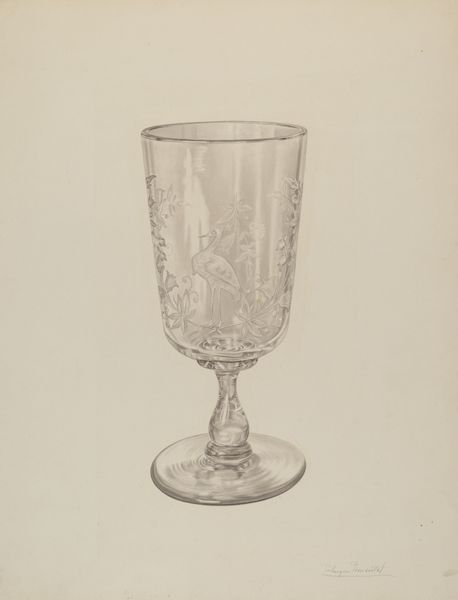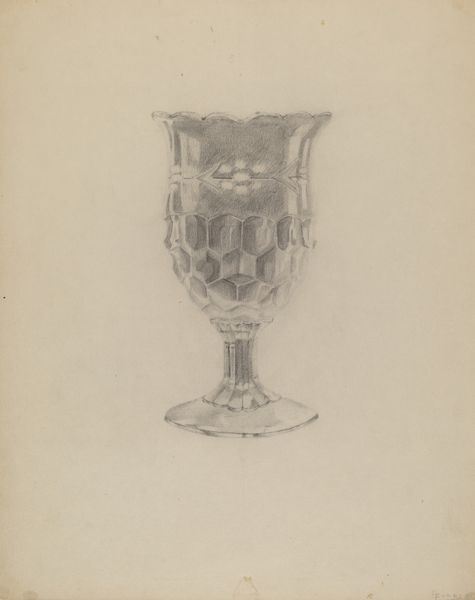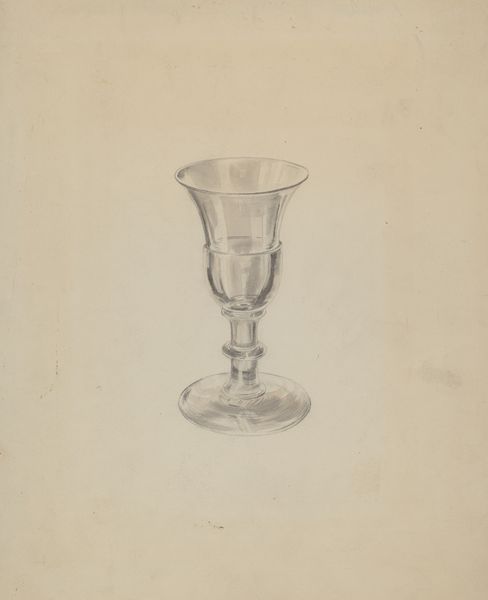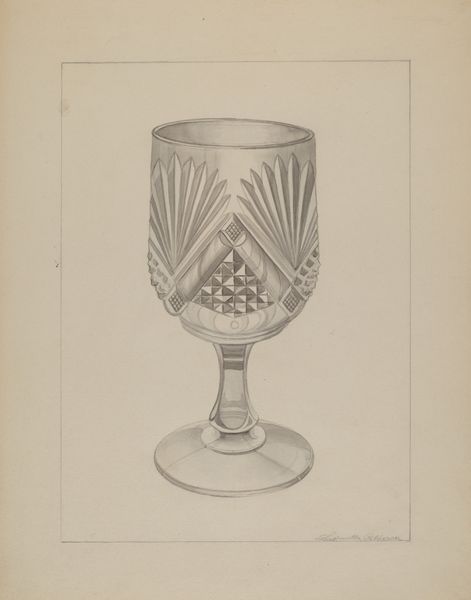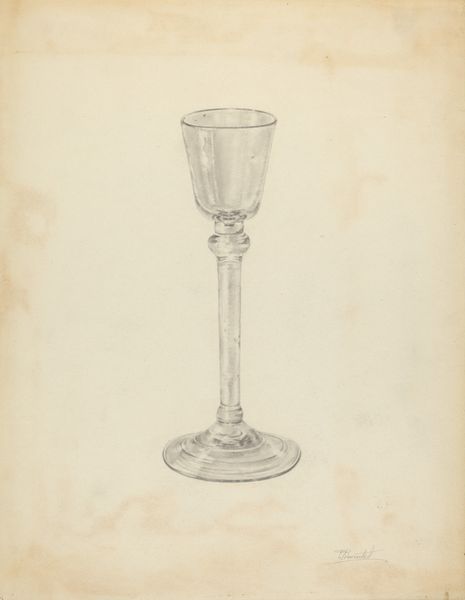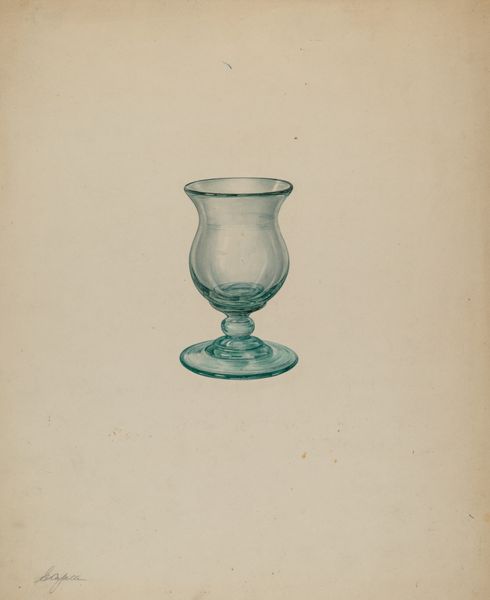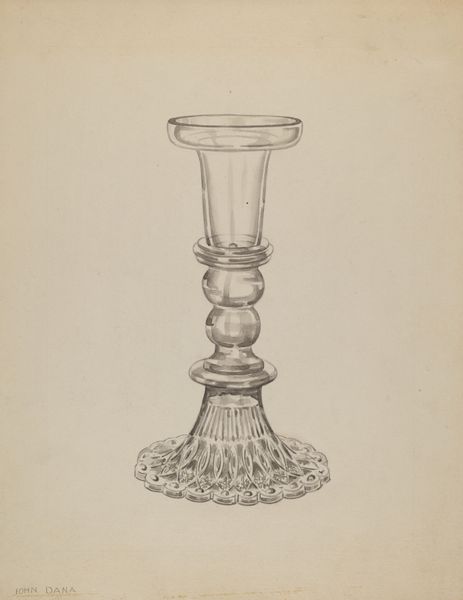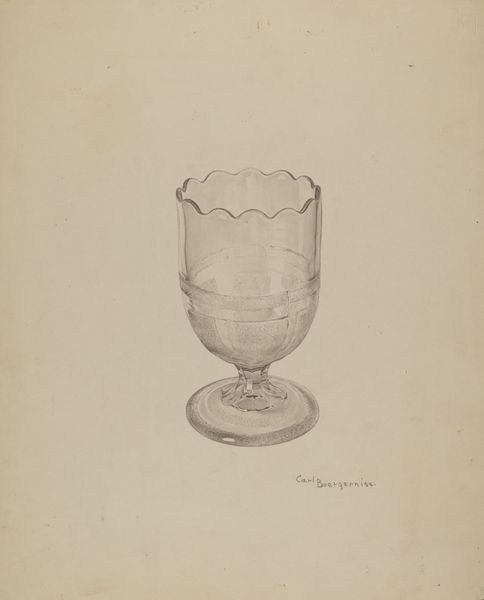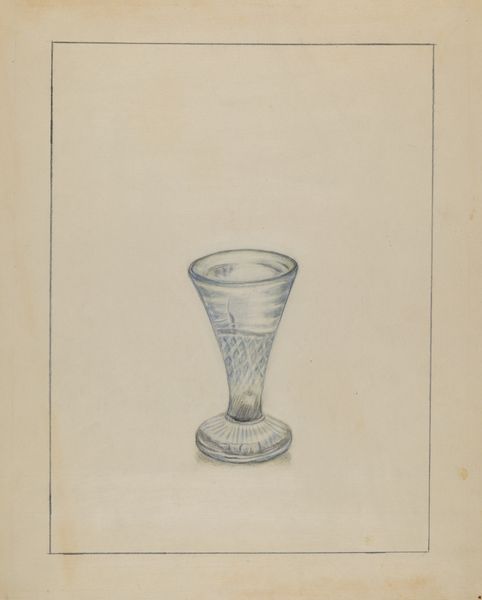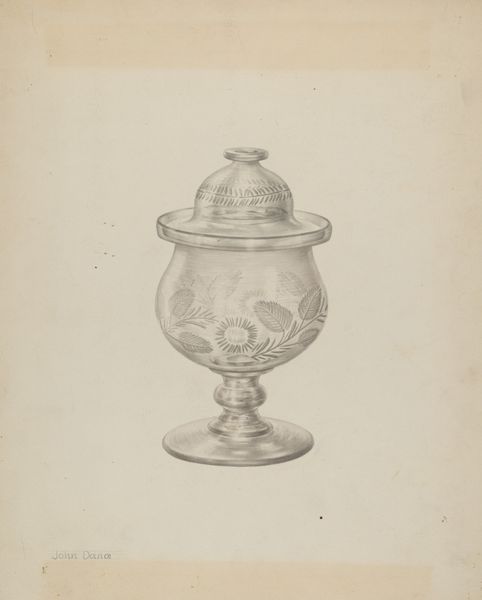
drawing, pencil
#
drawing
#
pencil drawing
#
pencil
#
realism
Dimensions: overall: 36.6 x 28.9 cm (14 7/16 x 11 3/8 in.)
Copyright: National Gallery of Art: CC0 1.0
Curator: Upon first viewing, this drawing evokes a certain subdued elegance, almost a melancholy charm with its soft shading and delicate floral patterns. Editor: That's a fitting observation. What we're looking at is a pencil drawing entitled "Vase," created around 1940 by the artist John Dana. Curator: The composition draws me in. The symmetry, the play of light and shadow on the glass—it speaks to a quiet perfection. There's a delicate, almost fragile, beauty about it. The choice of rendering such a detailed object in pencil, especially the etching on the body, is rather interesting. Editor: Absolutely, but one must also wonder about the social context of representing such luxury during that period. World War II was ongoing; ideas about class and gender were constantly being refigured. Does the presence of floral arrangements, historically associated with femininity, serve as an innocent rendering, or a deliberate commentary on ideas of fragility within a war-torn world? Is it about a nostalgia for a delicate life—a statement about domesticity versus what's happening with global politics? Curator: An astute observation that contextualizes what I perceive as an aesthetic exercise in visual simplicity. Looking closer, the interplay of light and shadow is more interesting than what I first appreciated; it highlights the object’s form and reveals Dana's deft control over tone. But could the seemingly straightforward subject hold any encoded symbols? Editor: What I wonder about, more than symbol, is subtext. What happens when we move beyond the "what" and explore the "why?" How does this work reinforce the societal expectation of maintaining beauty and domesticity during crises? And for whom was this drawing ultimately intended, what kind of values did they hold? How can the everyday subject speak to universal truths about loss, resilience, and memory, all rendered through the male gaze? Curator: Your ideas have shifted my understanding, from appreciation of artistry to analysis of history, but, nevertheless, this remains a successful representation, which prompts deeper discussion, no matter how uncomfortable that might be. Editor: Indeed. These lines and forms aren't simply about beauty; they're about us and our shared—and very difficult—histories. Thank you for exploring that today.
Comments
No comments
Be the first to comment and join the conversation on the ultimate creative platform.


